Smart #1 Premium – you’re in for an electric culture shock
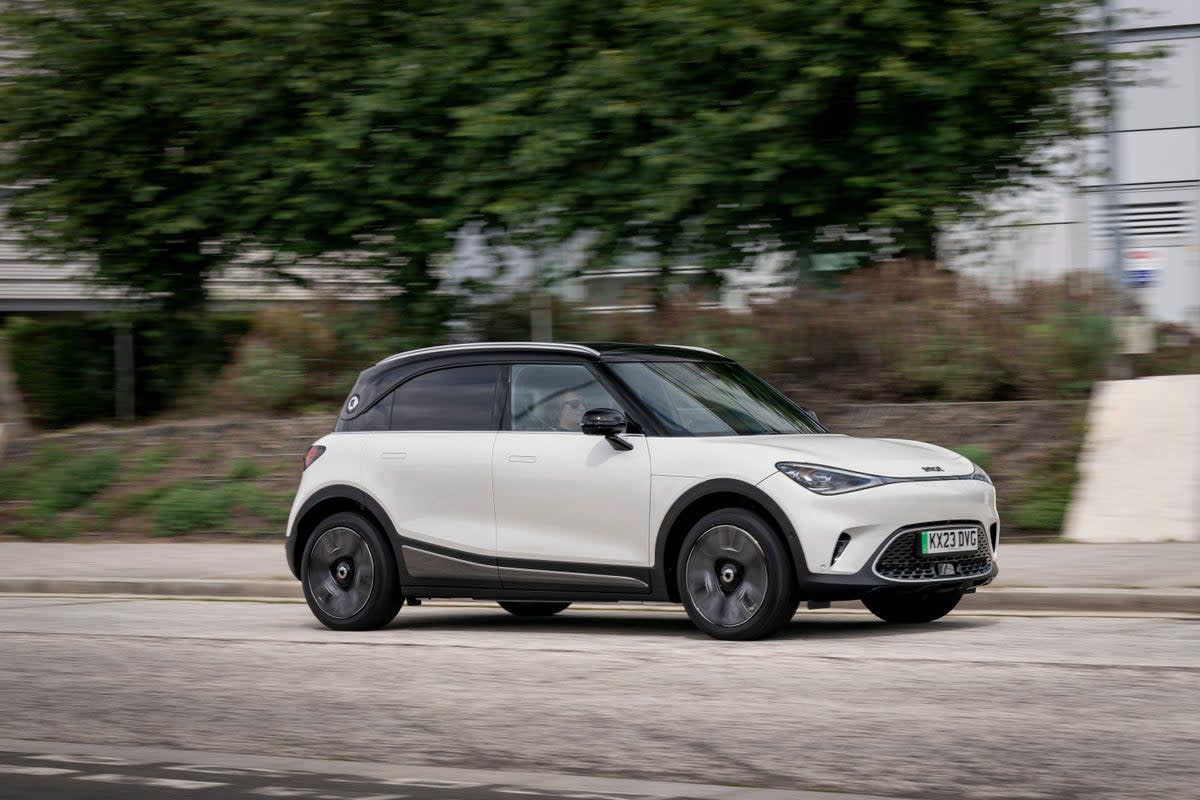
So there’s a few things to sort out about the Smart #1 before we get onto what a nice little electric car it is. First, the name. You pronounce it “Smart Hashtag One”. I know. Smart have a history of absurd punctuation, like when they rebranded the original tiny two-seat Smart car saloon as Smart ForTwo, which I’d have pronounced as “Smart For No Space Two”, which would have been appropriate given that there wasn’t much space for more than two people anyway.
Even now they try and make out that Smart should be “smart”, but I’m not having that, any more than I was going to go along with BMW calling the Mini “MINI”. By the way, back in the days when a Smart was a microcar, there was also a fun-packed Roadster, and also a couple of iterations of the Smart ForFour, which also didn’t have a space in the nomenclature, but, at least in Edition 1 form did and was a badly underestimated car (and all now rare).
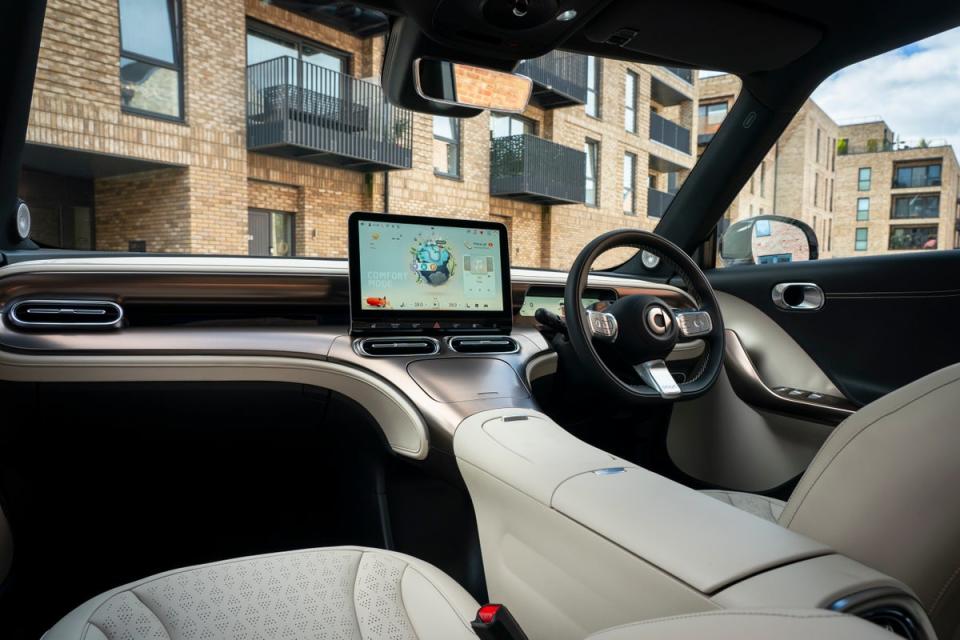
Second, what it is. It’s one of the new breeds of very compact SUVs – huge by the idealistic standards of the old Smart car, but increasingly the norm, because proper small city cars (eg VW Up! and indeed original Smart) are starting to disappear.
Consumers, like it not, are in love with the SUV concept. This is because of the higher driving position, perceived safety in a world of ever bigger cars, ease of ingress and egress for an ageing population (who can afford new cars), and the bogus “lifestyle” connotations. Manufacturers are happy to oblige, and all the more so as the mandated switch to battery electric cars make this new, taller shape inevitable – you have to stick the battery pack somewhere, and under the floor is the best option, as it’s thus better for interior space and the centre of gravity.
There’s another aspect to all this, too, which is that most of these new smaller battery electric vehicle (BEVs) have to made in lower-cost China to be remotely economical to buy and profitable to manufacture. “Mini cars make mini profits” as the industry says, and therefore low-cost production is essential to viability.
Hence the radical decision by Smart parent Daimler (ie Mercedes-Benz) to sell the old Smart factory in France to Ineos Automotive (to make their Grenadier Land-Rover lookalike), and make this new, fatter baby in Shaanxi province in the People’s Republic. It’s a joint venture with Geely Corporation, one of the major Chinese players. Soon the Hashtag, as I might nickname it, will be joined by other miniaturised “crossover” SUVs such as the Volvo EX30 and Dacia Spring.
THE SPEC
Smart #1 Premium
Price: £38,950 (as tested; range starts at £35,950)
Drivetrain: Single electric motor, powered by 62kWh battery pack
Power: 272hp
Top speed: 112mph
0-60mph: 6.7secs
Fuel economy: 4m kWh
CO2 emissions: 0
The good news is that soon you’ll be able to get a new electric car for less than £20,000. That’s progress, though the Smart #1 isn’t there yet, and, indeed, charges a premium price – pushing £50,000 for the astonishing Brabus variant of the #1. Looks like a tasty profit margin.
Whether the Hashtag is really all that much “greener” than the old baby Smart (now discontinued) with its tiny petrol engine I’m not sure, and I’ll admit I’ll miss the Smart ForTwo, notwithstanding its terrible jerky semi-automatic transmission. The new Smart #1 is like a cross between that original Smart and one of those blobby Porsche SUVs, so that it looks a bit like a half-melted jelly on wheels. The resulting shape could be mistaken for a Tesla (possibly no coincidence), and, while striking, no one could call it beautiful. Borderline cute, maybe.
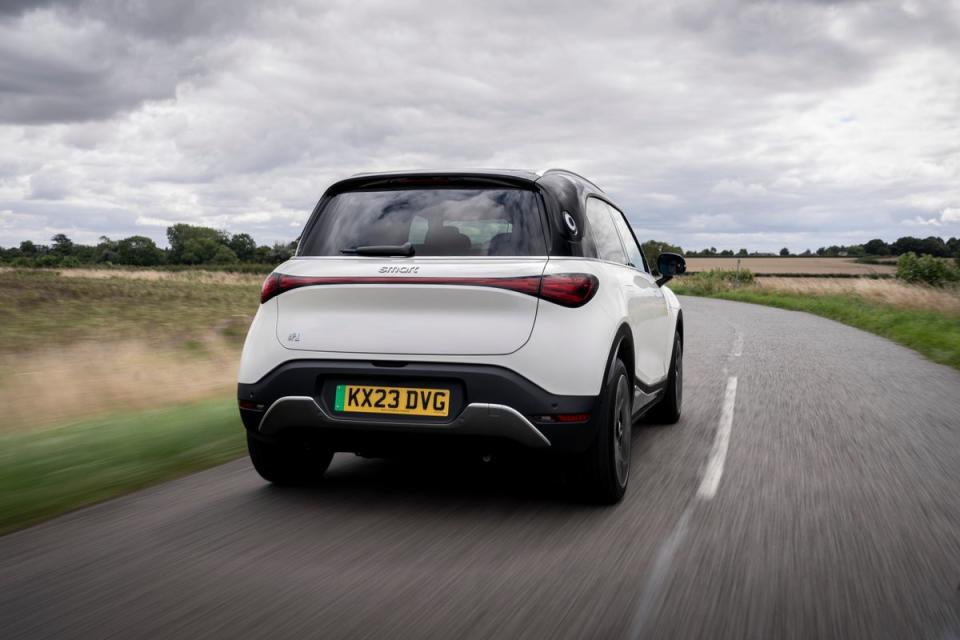
It’s also very Chinese, by which I mean it’s a bit of a culture shock. The touchscreen controls on the big screen work in a slightly different way to what you’ve been used to, and, in the case of this new generation Smart, features a friendly fox wandering around the graphics. It’s a much more playful set up than we’ve been used to, in other words, and harder to navigate. There are too few old-fashioned knobs and switches to get at the stuff you need to access quickly, and too many menus to get through. The steering wheel controls do compensate for that a bit, but you still tend to take your eye off the road more than you should.
The strangest thing is the way the giant central screen dwarfs the thin letter box-style information on the dash, where you’d expect to see big clear dials. The “head-up display” has essentials such as speed and satnav turn instructions projected onto the windscreen but, as I say, this Chinese-standard approach is an unfamiliar one; and I’m not convinced it beats a “proper” speedometer.
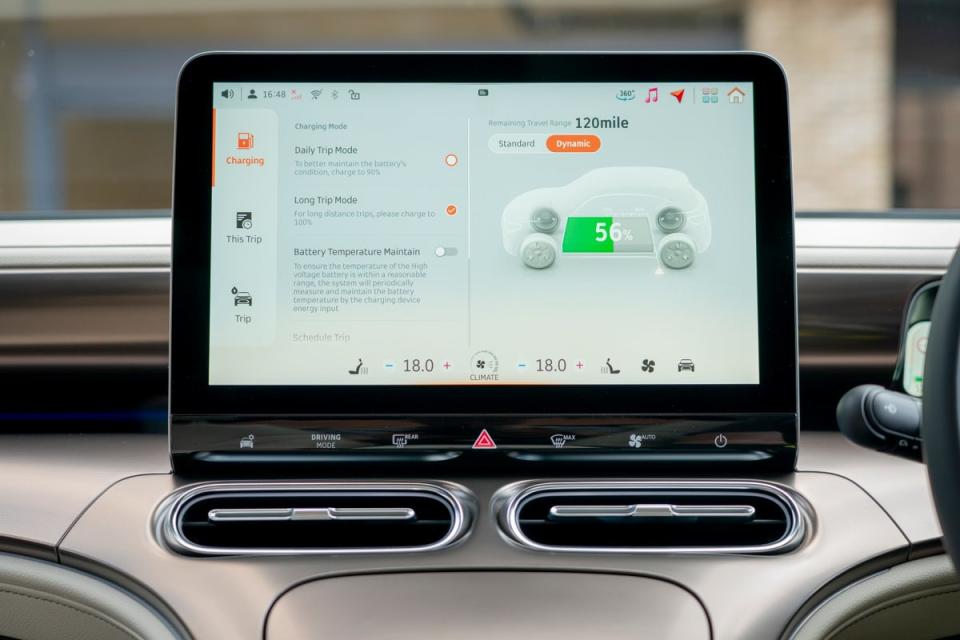
The interior ambience isn’t as Bauhaus cool as the Smarts used to be. The centre console is a huge slab of shiny plastic that goes up to your elbows, and is pointlessly big, given that the drinks holder and storage box are hardly big enough to get a Mars bar into. It’s very much about style in there, and although fun and fashionable, the wilful eccentricity is a bit much. Or maybe I’m too old to enjoy having my car yell “youthful” at me quite so hard. The only link to the old world is the stalks for the lights, wipers and transmission – pure Mercedes-Benz.
The Smart is easy to live with. All the old protocols of motoring are disappearing with the new technologies, and nowhere more so than in the Chinese-engineered models. With the huge yo-yo like key in your pocket, you stroll up to the car and the door handle pops out for you. In you clamber, and there’s no starter button to press, and no handbrake to release. You just switch the transmission stalk to drive and off you go. The same in reverse when you exit, a touch to the door handle simultaneously closing it down and locking it. If you’re trading in an old Polo for a Hashtag you’re in for a culture shock.
To drive, it’s also pretty good, though the low-speed ride could be a bit more compliant. Being small you feel like you’re going more briskly than you actually are, but getting to 60mph from rest in seven seconds is pretty good – and the Brabus version claims to do it in a Ferrari-style 3.9 seconds. It’s actually quite fun and athletic on the open road, belying its “fat toddler” looks.
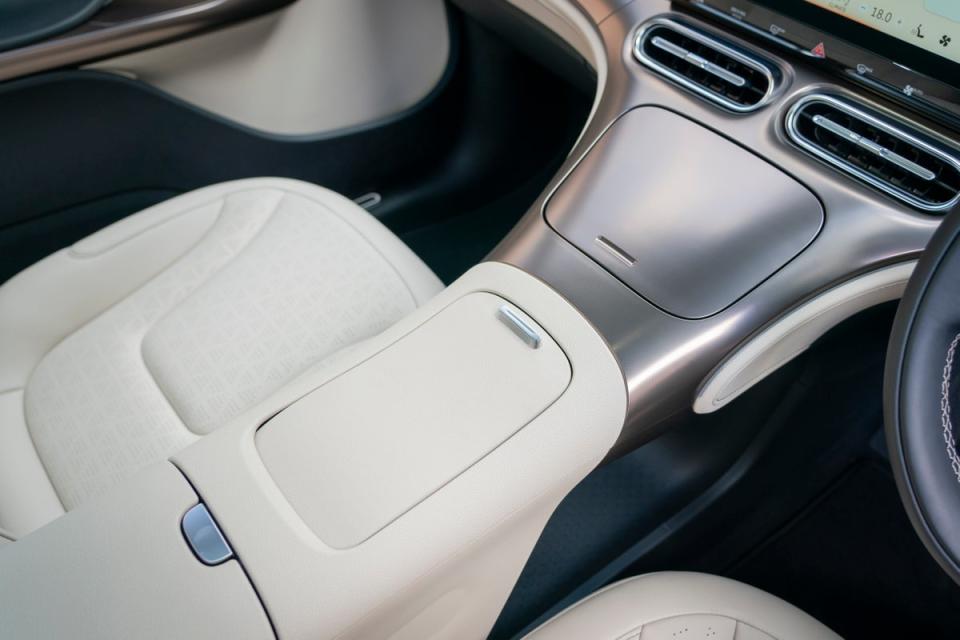
Space is what you’d expect in a car this size, which is to say just about room for four adults, and a small boot with a high lip (the batteries get in the way): minimalist couples with one kid might be best suited to this one. The one undeniably impressive thing about the #1 is its range: 250 to 280 miles on a full charge and normal driving. You should not have to recharge this one very often.
The Hashtag does feel solidly built, as it ought to at these prices, and with an electric vehicle you need to look at the warranty in a different way. The main bodywork and auxiliary bits carry an unlimited mileage three year warranty; the electric car bits are covered for eight years or 100,000 miles, but the battery pack carries a novel eight years/125,000 miles guarantee for 70 per cent battery “state of health” (or “charge” in layperson’s terms). That implies some diminution of the 200 miles plus range in the medium to long term.
Should you get one? It’s really about who you are as much as what the car is. If you put fun above function and novelty above value, then the Smart #1 is the kind of ultra-modern car that should appeal to funky folk who like to embrace the future. If you like things a bit more trad and want more for your money, then the more conventional MG ZS (also Chinese as it happens, but less exuberant) should still be the default BEV choice for space and efficiency. It’s the kind of choice we’ll all have to make, one way or another, in the coming years.

